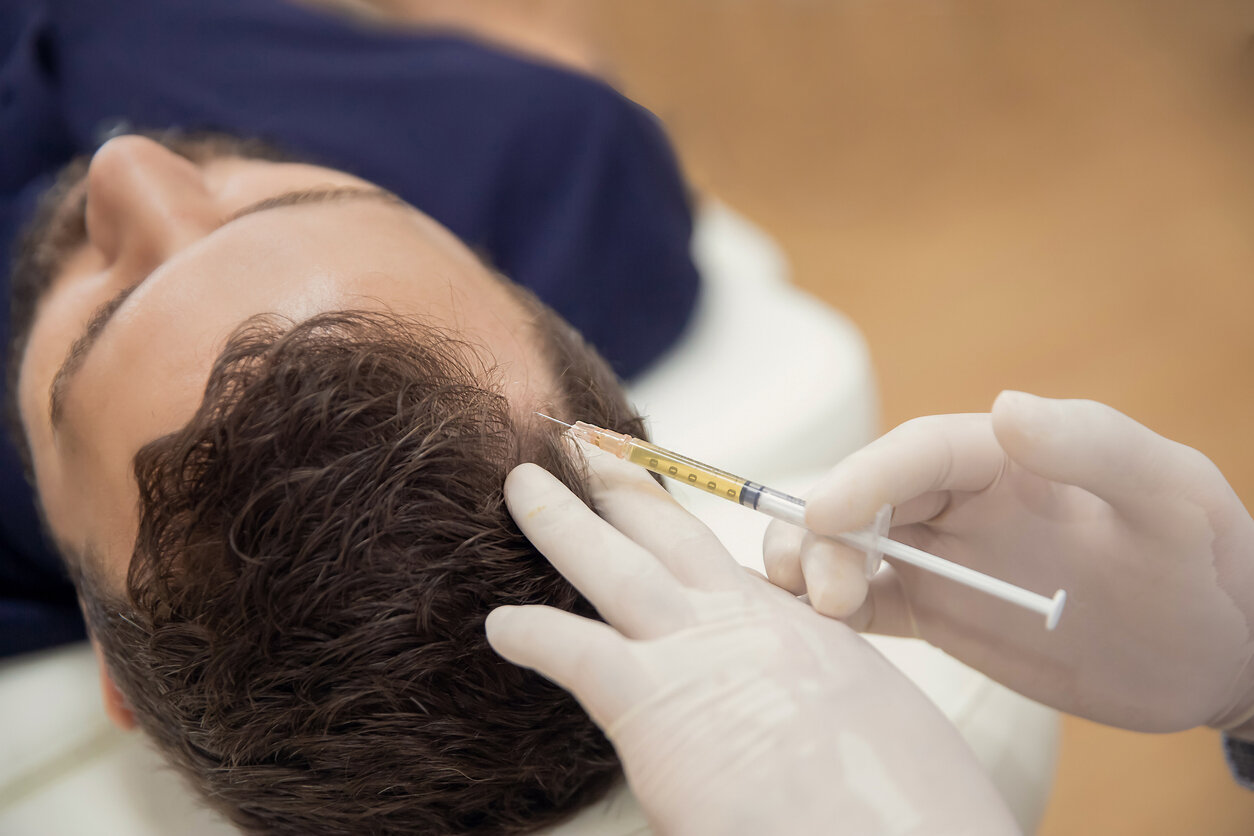Working Time
-
Mon - Sat :
10:00am - 01:00pm
05:00pm - 08:00pm
Contact Info
-
Phone: 7624008000
- recombhtc@gmail.com
PRP Treatment

What is a PRP?
Platelet-Rich Plasma (PRP) therapy is a regenerative medical treatment that uses the patient’s own blood to promote healing and tissue regeneration. PRP is a concentrated form of plasma that contains a higher number of platelets than what is typically found in blood. Platelets play a crucial role in the body’s healing process, as they contain growth factors and proteins that aid in tissue repair and regeneration.
How Does PRP Help in Hair Loss?
PRP therapy for hair loss leverages the growth factors and proteins in platelets to stimulate hair follicles and promote new hair growth. When injected into the scalp, PRP can enhance blood supply to hair follicles, increase hair thickness, and extend the growth phase of the hair cycle. This makes it an effective treatment for conditions like androgenetic alopecia and other types of hair thinning.
Procedure of PRP
The PRP procedure involves several steps:
- Blood Draw: A small amount of the patient’s blood is drawn, usually from the arm.
- Centrifugation: The blood is placed in a centrifuge, which spins it at high speeds to separate the platelet-rich plasma from other components of the blood.
- Preparation: The concentrated PRP is collected and prepared for injection.
- Injection: Using fine needles, the PRP is injected into the scalp areas experiencing hair thinning or loss. The process usually takes about 30 minutes to an hour.
Ideal Candidate for PRP
PRP therapy is suitable for individuals who have early-stage hair loss and still have functioning hair follicles. Ideal candidates typically include:
- Men and women with androgenetic alopecia (pattern hair loss).
- Individuals experiencing hair thinning but not complete baldness.
- Patients looking for a natural and minimally invasive treatment option.
- Those without any underlying health conditions that could affect the healing process.
Duration and Frequency of PRP
The duration and frequency of PRP treatments can vary based on individual needs and the severity of hair loss. Typically, patients undergo an initial series of four to six treatments spaced about four weeks apart. After the initial series, maintenance treatments are recommended every four to six months to sustain the results.
Possible Side Effects of PRP
PRP therapy is generally considered safe, as it uses the patient’s own blood, reducing the risk of allergic reactions. However, some potential side effects include:
- Mild pain or discomfort at the injection site
- Redness or swelling
- Temporary bruising
- Infection (rare)
Who Should Avoid PRP
PRP therapy may not be suitable for everyone. Individuals who should avoid PRP include:
- Those with blood disorders or clotting issues
- Individuals with infections at the treatment site
- Patients undergoing anticoagulant therapy
- Pregnant or breastfeeding women
Cost of PRP
The cost of PRP therapy varies widely based on the expertise of the doctor and the city in which the treatment is performed. Factors influencing the cost include the number of sessions required, the clinic's location, and the practitioner's experience. On average, a single PRP session can range from 2500 to 6000 Rs. It's important to consult with a qualified healthcare provider to get an accurate estimate and understand the potential financial commitment.
PRP therapy offers a promising, natural solution for hair loss with minimal downtime and risks. Consulting with a specialist can help determine if PRP is the right option for your hair restoration needs.


